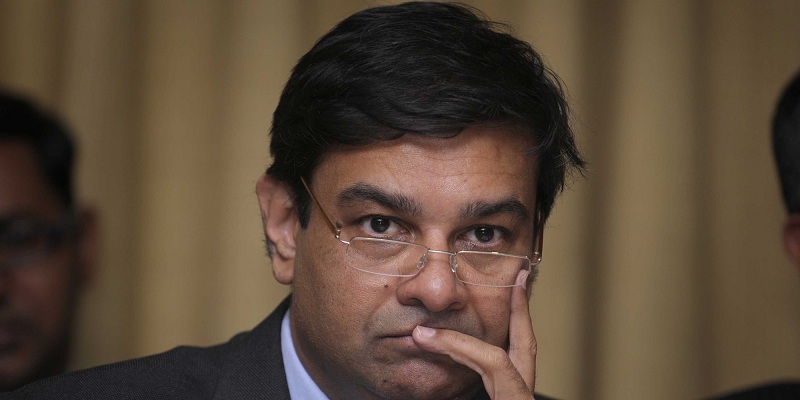
Late last week, the Reserve Bank of India(RBI) unleashed yet another weapon to clean up the mess that India’s public sector banks are in. The RBI reviewed and revised the preventive corrective action (PCA) framework for banks.
At a very simplistic level, the PCA framework essentially will restrict the ability of any bank to go about their normal business, in case they don’t meet certain performance parameters. The idea is to ensure that banks do not get into a further mess.
The RBI has basically set three risk levels for the PCA framework to kick-in. Take the case of bad loans or net non-performing assets(NPAs) of banks. (NPAs are essentially loans which borrowers have defaulted on and are no longer repaying. These NPAs are referred to as gross NPAs. Against, the gross NPAs, the banks set aside a sum of money referred to as provisions. Once these provisions are subtracted from gross NPAs what remains are net NPAs).
Let’s say the net NPA of a bank is greater than or equal to 6 per cent but less than 9 per cent. In this case, the bank will face a restriction on dividend distribution. This is the first risk level of the PCA framework. In case, the net NPA is greater than or equal to 9 per cent and less than 12 per cent, along with dividend restrictions the bank will also face a restriction on branch expansion and at the same time will have to increase its provisions or the money it sets asides against gross NPAs. This is the second risk level of the PCA framework.
If the net NPA is greater than or equal to 12 per cent, then along with the dividend restrictions, restrictions on bank expansion, greater provisioning, the banks will have to limit the management compensation and directors’ fees. This is the third risk level of the PCA framework.
Along with net NPAs, the other performance parameters that the RBI plans to take a look at as a part of the PCA framework are the capital adequacy ratio, return on assets and the leverage of the bank. If the bank does not meet the RBI set levels of these parameters, the actions highlighted above will kick-in.
Over and above this, there are other actions that can kick-in. These include:
- Special audit of the bank
- A detailed review of business model in terms of sustainability of the business model of the bank.
- RBI to actively engage with the bank’s Board on various aspects as considered appropriate.
- RBI to recommend to owners (Government/ promoters/ parent of foreign bank branch) to bring in new management/ Board.
- RBI to supersede the Board.
- Reduction in exposure to high risk sectors to conserve capital.
- Preparation of time bound plan and commitment for reduction of stock of NPAs.
- Preparation of and commitment to plan for containing generation of fresh NPAs.
- Strengthening of loan review mechanism.
- Restriction of staff expansion.
- Restrictions on entering into new lines of business.
- Restrictions on accessing/ renewing wholesale deposits/ costly deposits/ certificates of deposits.
- Reduction in loan concentrations; in identified sectors, industries or borrowers.
If you look at the above actions, other than the RBI superseding the board of the bank, the other steps are more or less what any bank which is in trouble would undertake. The question is will the PCA unravel the mess that the Indian banks, in particular the government owned public sector banks, are currently in.
The biggest problem for the public sector banks has been the fact that their gross NPAs have been increasing at a very rapid rate. Between December 2014 and December 2016, the gross NPAs of public sector banks increased by 137 per cent to Rs 6.46 lakh crore.
What is the reason for this huge and sudden increase in gross NPAs? A major reason lies in the fact that banks have been recognising their bad loans as bad loans at a very slow speed. The question is the recognition of bad loans as bad loans over? Have all bad loans been recognised as bad loans? Or are banks still resorting to accounting gimmicks and postponing the recognition of bad loans? This is a question which only the banks or the RBI can answer.
The most important step in cleaning up the balance sheets of Indian banks is ensuring that all the bad loans have been recognised as bad loans. A problem can be solved only after it’s properly identified. The tendency not recognise bad loans as bad loans and project a financial picture which is incorrect needs to end.
The second biggest problem for Indian banks has been the poor recovery rate of bad loans (i.e. net NPAs in this case). Data from RBI shows that in 2015-2016, the recovery rate fell to 10.3 per cent of the net NPAs. In 2014-2015, it was at 12.4 per cent. In 2013-2014 and 2012-2013, the recovery rates were even better at 18.4 per cent and 22 per cent, respectively.
This basically means that the ability of banks to recover bad loans has gone down over the years. Will the PCA framework be able to help on this count? It doesn’t seem so. A greater portion of the bad loans need to be recovered from corporate India. As the Economic Survey points out: “The stressed debt is heavily concentrated in large companies.” Hence, any major recovery from large companies will need a lot of political will something, which is something the RBI cannot do anything about.
The PCA framework will kick-in depending on the performance of banks as on March 31, 2017. But taking the net NPA numbers as on December 31, 2016, how does the scene look like for public sector banks? There are 21 public sector banks which currently have a net NPA ratio of greater than 6 per cent. Hence, the PCA framework will apply to all of these banks. The first risk level of the PCA framework will apply to all these banks.
Of these ten banks have an NPA of greater than 9 per cent. The second risk level of the PCA framework will apply to these banks. Two banks have an NPA of greater than 12 per cent. The Indian Overseas Bank is the worst of the lot at 14.3 per cent. The State Bank of Patiala came in next as of December 2016. This bank has since been merged with the State Bank of India.
The PCA framework will essentially limit the ability of these banks to carry out business and hence, limit further damage to the bank and the financial system.
Nevertheless, there is no way the framework will clear up the mess that these banks are in. For that what is needed is a lot of political will to go after corporates and recover the bad loans that are outstanding. The question is do we have that kind of political will?
The column originally appeared on Firstpost on April 19, 2017


 The bad loans plus restructured assets plus the assets written off in total made up for 17% of the books of public sector banks. This means that for every Rs 100 of loan given by public sector banks, Rs 17 worth of loans are in dodgy territory. Rs 6.2 have become a bad loan, where the repayment of the loan by the borrower has stopped happening. Rs 7.9 has been restructured i.e. the repayment of the loan has been placed in a moratorium for a few years. In some cases, the borrower does not have to pay the interest during the moratorium period. In some other cases the tenure of the loan has been extended. Further, Rs 3 out of every Rs 100 has been written off, with no hope of recovery of the loan.
The bad loans plus restructured assets plus the assets written off in total made up for 17% of the books of public sector banks. This means that for every Rs 100 of loan given by public sector banks, Rs 17 worth of loans are in dodgy territory. Rs 6.2 have become a bad loan, where the repayment of the loan by the borrower has stopped happening. Rs 7.9 has been restructured i.e. the repayment of the loan has been placed in a moratorium for a few years. In some cases, the borrower does not have to pay the interest during the moratorium period. In some other cases the tenure of the loan has been extended. Further, Rs 3 out of every Rs 100 has been written off, with no hope of recovery of the loan.

